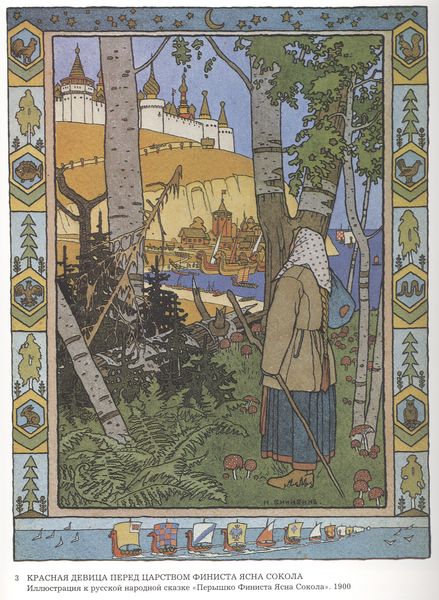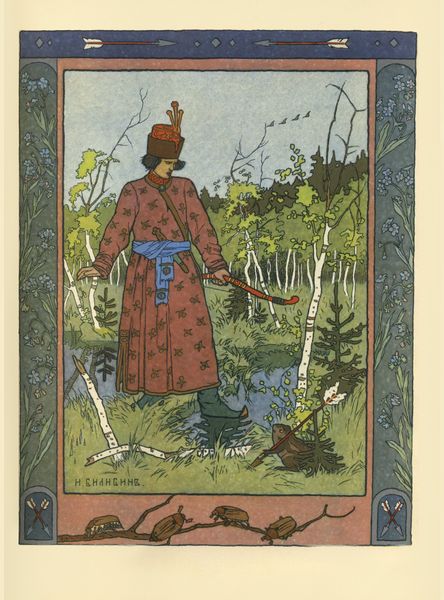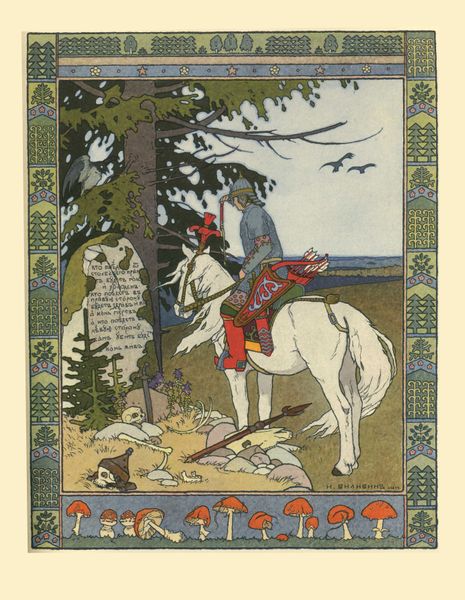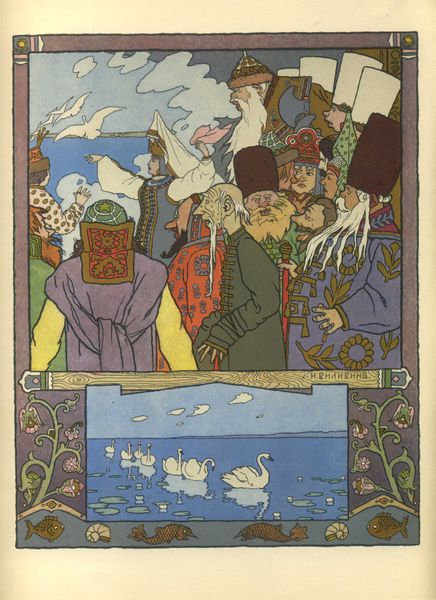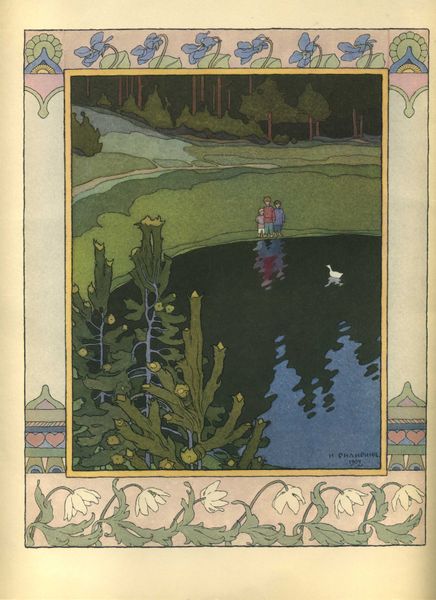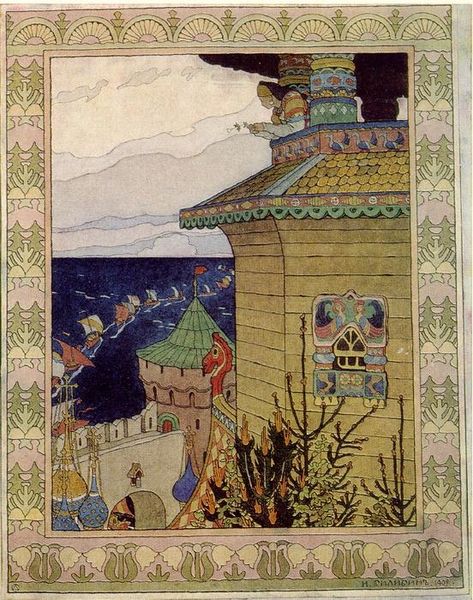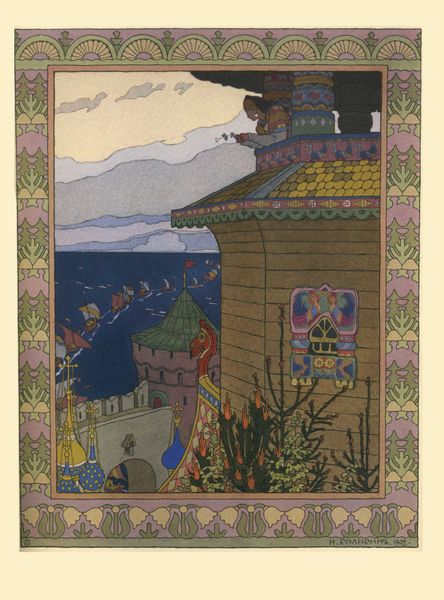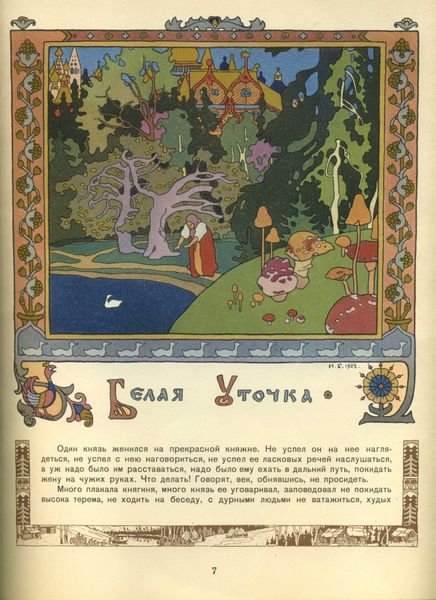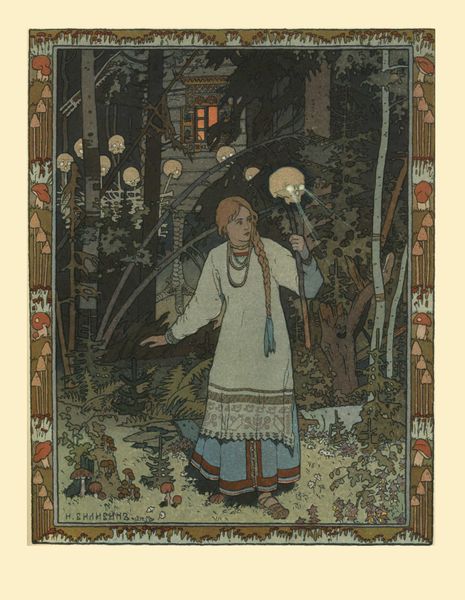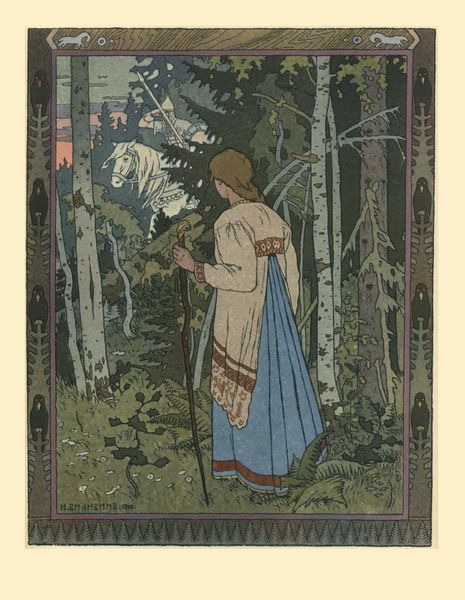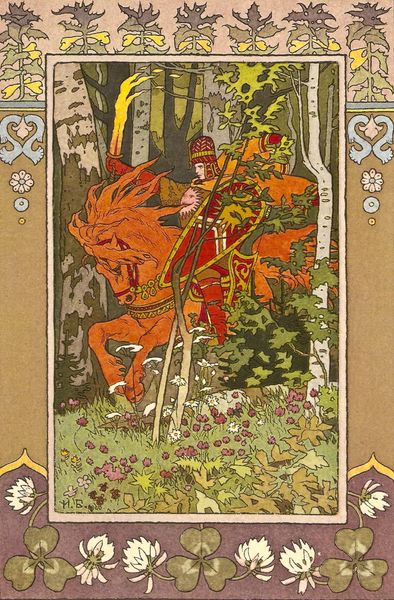
tempera
#
art-nouveau
#
narrative-art
#
tempera
#
landscape
#
folk-art
#
mythology
#
russian-avant-garde
Copyright: Public domain
Curator: Look at the quiet stillness in this piece, it is "Illustration for the Russian Fairy Story "Feather Of Finist Falcon"" by Ivan Bilibin. The details are astonishing, the flat blocks of color adding to that dreamy feel. What stands out to you? Editor: I'm immediately struck by the distinct visual planes here, how Bilibin layers the composition. The figure is placed within an enchanted forest, against an imposing architectural presence looming in the background. Curator: That's right! There is also a very precise edging around all the forms with exquisite craftsmanship. This adds so much detail. And note how the tempera allows those rich colors to retain clarity. What about the folk art style catches your eye, Editor? Editor: Knowing the context of Russian fairy tales is vital, and that’s certainly part of this. We see visual tropes of folk art, where figures represent certain social roles, often reflecting a longing for older rural ways of life. We must consider Bilibin’s aristocratic background too, informing how he treats representations of labor and rurality within this mythology. Curator: Agreed. You see how the lines create these sort of wood-block images? How the artist has used traditional art styles as well? What about how Russian folk costumes also served a social and historical purpose? Editor: Precisely! These costumes were deeply rooted in social and symbolic codes, a visual articulation of identity tied to region, marital status, and even spiritual beliefs. Consider the textile industry's exploitative nature, too, during that time. This piece may represent idealized rural traditions, but that ideal stands in stark contrast to the realities of material production, forced labor, and industrialization. Curator: I completely agree! Bilibin uses the language of labor without showing us labor, which underscores the fantasy-versus-reality idea of these materials, how that labor and tradition play into Russian cultural identity, how the medium itself—the painting process—embodies a tradition, referencing craftsmanship. Editor: We are given this idyllic representation of rural Russia that Bilibin romanticizes. To simply embrace the aesthetics, though beautiful, feels like a disservice to those histories that exist beyond the gilded borders. Curator: That is certainly a valid point! Examining it through that lens provides a much more comprehensive experience for anyone studying the artwork. Editor: Thank you! It certainly broadens my experience viewing it.
Comments
No comments
Be the first to comment and join the conversation on the ultimate creative platform.
